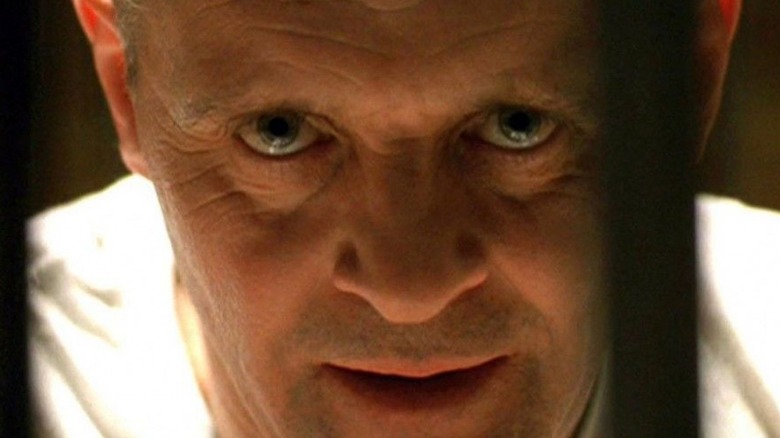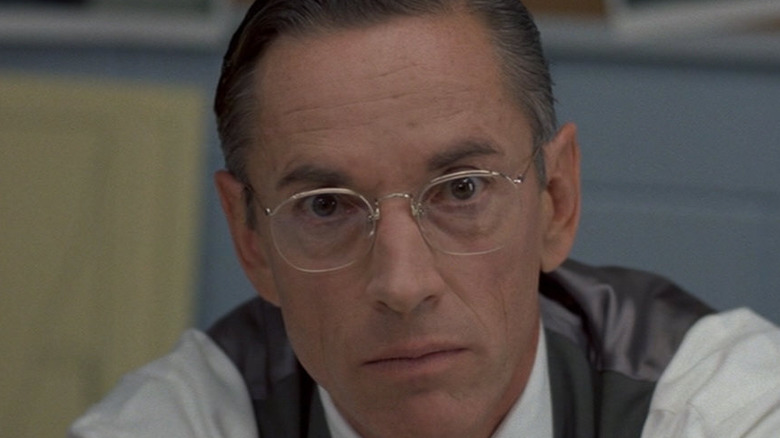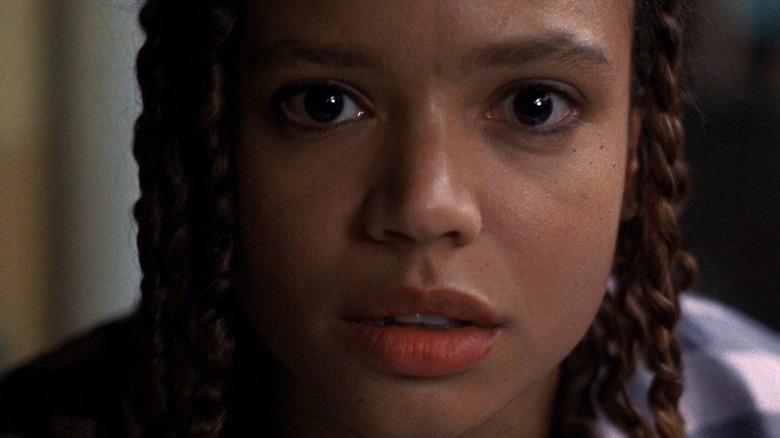The Real Reason Characters From Silence Of The Lambs Talk To The Camera
"The Silence of the Lambs" is a modern horror classic. The first of several films including Dr. Hannibal Lecter (Anthony Hopkins), director Jonathan Demme's adaptation of Thomas Harris' 1988 novel takes viewers on a dark, twisted ride into the ugliest recesses of the human mind. It also made history as only the third film to win all "big five" Oscars: Best Actor, Best Actress, Best Director, Best Screenplay, and Best Picture.
Jodie Foster leads the film as Clarice Starling, an FBI trainee who hunts down serial killer "Buffalo Bill" (Ted Levine), who's kidnapped and skinned several women. She fights to distinguish herself among her often-patronizing male peers, especially her boss, Jack Crawford (Scott Glenn). Along the way, Clarice gets help from an unexpected source: Lecter, an imprisoned, cannibalistic psychiatrist with whom she strikes up a strange and mutually beneficial kinship.
Part of what makes "The Silence of the Lambs" such a viscerally effective horror film is the unsettling way in which many characters speaking to Clarice are filmed: They look directly at the camera, and are generally shot in close-up. But as one Reddit user points out, this is also a thematic choice.
These point-of-view shots help audiences empathize with Clarice
As Reddit user u/bcdubbs382 points out, characters talking to Clarice in "The Silence of the Lambs" generally speak directly to the camera. This is the result of a conscious choice made by Demme: It firmly situates audiences in Clarice's point of view. By doing so, they're more likely to identify with and root for her over the men who surround her. Much of the film follows Clarice as she navigates the "boys' club" of the FBI, attempting to distinguish herself to the superiors who believe she is too young and inexperienced to be taken seriously. Point-of-view shots make the intensity of her situation immediately clear.
Of course, it's not just male characters who are filmed in this way. During a scene in which Clarice and her friend Ardelia (Kasi Lemmons) figure out that Buffalo Bill knew his first victim, Ardelia is also filmed in tight close-up, emphasizing her role in helping Clarice make this breakthrough realization. The point-of-view shots also put viewers in Clarice's position as she gets closer to the fascinating yet terrifying Lecter.
Demme's subjective lens makes for revolutionary filmmaking
Apart from being thematically intriguing, Demme's use of these subjective, close-up camera angles is also an innovative and even groundbreaking filmmaking choice.
As writer Glen Weldon explains in an article for NPR, these tight shots are "a deliberate choice that implicates us, and thus implicitly demands more of us, than Hollywood thrillers generally do. We might not register that it's happening the first time we see the film, but we sense that something is different, more intimate, more insistent."
Little White Lies critic Danilo Castro points out that these close-ups also help make "The Silence of the Lambs" more terrifying, especially when it comes to Lecter. "As [Clarice and Lecter's first scene together] progresses," Castro writes, "the camera pushes in on Lecter's face, his piercing eyes transfixed on Starling, drawing her — and by default, the audience — closer to him. It gets to the point where the only way one can break free of his gaze is to look away from the screen. In doing this, the film quite literally traps its audience, as the simple act of viewing means that we succumb — as Starling does — to Lecter's psychological games."


